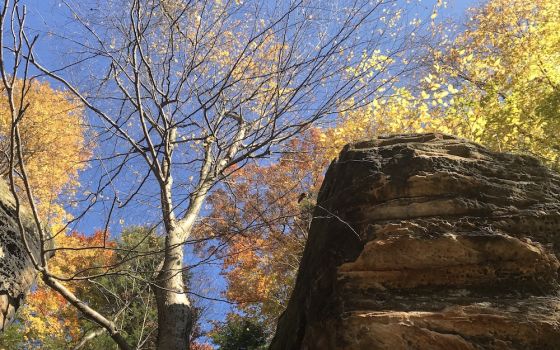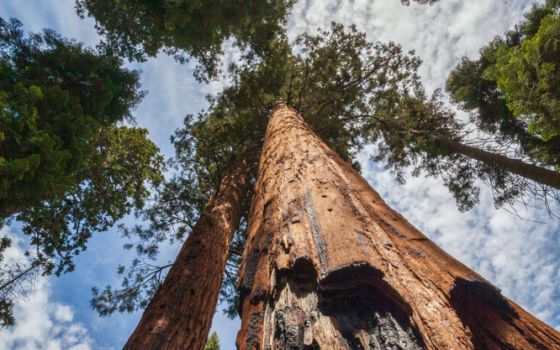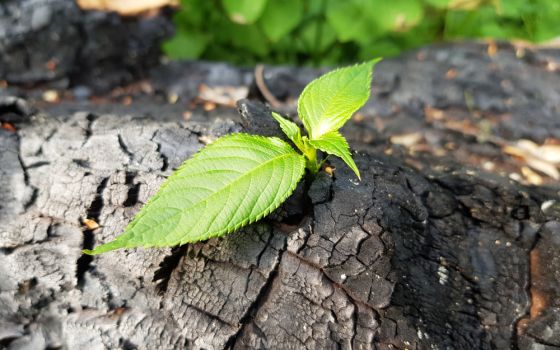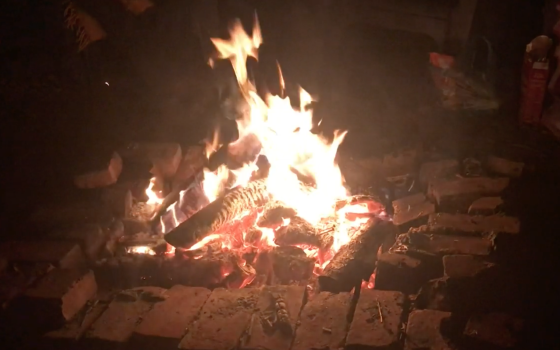
Students experience kinship with creation at Bishop O'Dowd High School in Oakland, California. (Vincent Jurgens)
PAUSE
READ
In the settler mind, land was property, real estate, capital, or natural resources. But to our people, it was everything: identity, the connection to our ancestors, the home of our nonhuman kinfolk, our pharmacy, our library, the source of all that sustained us. Our lands were where our responsibility to the world was enacted, sacred ground. It belonged to itself; it was a gift, not a commodity, so it could never be bought or sold. These are the meanings people took with them when they were forced from their ancient homelands to new places.
― Robin Wall Kimmerer, Braiding Sweetgrass: Indigenous Wisdom, Scientific Knowledge, and the Teachings of Plants
We, the people, have made mistakes. We have made mistakes in our relationships with those who came before us and the land that holds their histories. We have made mistakes in how we have managed and misunderstood the wild...We can continue on the path we have been on, in this nation that privileges profit over people and land; or we can unite as citizens with a common cause--the health and wealth of the Earth that sustains us. We have arrived at the hour of land.
—Terry Tempest Williams
REFLECT
Many of us inherited a settler mindset (land as property) and a consumer mindset (land as resource to be exploited). As we are urged by scientific and spiritual leaders alike towards a paradigm shift in how we relate to land, do we have the courage to see land as relative, or even more radically, land as self?
At the school where I work, a four-acre hillside that was once a wasteland of weeds and garbage is now a thriving wildlife habitat, edible garden and outdoor learning space lovingly called the Living Lab. Inspired by our charism call to “Kinship with Creation” and indigenous stewardship practices, this ecological restoration project was a result of 20 years of vision and volunteering by students, staff, parents and alumni.
As the land has been restored and transformed by human care, so too has our community been restored and transformed by the land. Students have grown up with the flora and fauna, their inner landscape connected to their outer landscape. The land is their relative.
According to Genesis, we are created from the dust of the earth. Funerals often include the phrase from the Book of Common Prayer, “earth to earth, ashes to ashes, dust to dust.” The Latin word “humus,” meaning earth or ground, is the root of what it means to be human. The late great Passionist priest Thomas Berry, who found his particular place as an adolescent in a meadow across a creek, asserted that "the human is that being in whom the universe reflects back upon itself in conscious self-awareness." The land is our self.
Considering what humans are doing to the land, our use of self-reflexive consciousness is discouraging. But the story is not finished, and climate change is the ultimate teaching moment. The recent IPCC report has huge implications for my fellow educational leaders and calls for a mindset shift resonant of Pope Francis' mandate in Laudato Si: "to become painfully aware, to dare to turn what is happening to the world into our own personal suffering and thus to discover what each of us can do about it."
ACT
- Find a piece of land (a trail, park, backyard) where you can sit for a period of observation. Notice how you might recognize the land as relative, the land as self.
- Confirm (or create) your participation on Sept. 18 in World and National Clean-up Day. From coast to coast, organizations and individuals volunteer to clean up parks, trails, beaches, mountains, and open spaces.
- Learn how to become an advocate for sacred lands, including our own National Parks.
pause | read | reflect | act
You can sign up here to receive these reflections every Monday, Wednesday and Friday throughout the Season of Creation, Sept. 1-Oct. 4.
Advertisement







